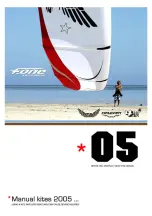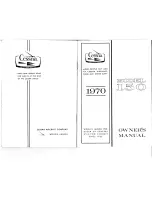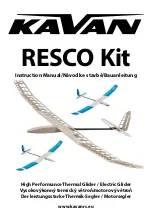
www.f-onekites.com
Before use, carefully read this manual;
Using a kite involves risks and can cause severe injuries. That is why it is
strongly advised to follow a proper training in an accredited school before your first
use. To locate the school nearest you please log on to www.f-onekites.com in the
school / dealers area of the site.
Here are some safety tips to know and to follow:
The equipment, (helmet, life vest, etc…) contributes to your safety, yet caution remains the
best safety device of them all. Keep in mind that no one controls the kite at 100%. Learn, to look
around, to pin point the struggling kitesurfers, and to choose a safe spot.
Rule n°1: Your safety
•
Do not ever tight yourself to the kite in a permanent manner without an emergency quick re-
lease device, you should always be in a position to let go of the kite rapidly in a case of an
emergency (tangled lines, wind to strong, injury…). To achieve that, regularly check your
material, insure the quick release is not worn out, regularly rinse your material. But keep in
mind that every quick release safety system should work in combination with a leash, which
allows you to keep your kite attached to you. This leash should also be releasable in case of
an emergency. Every F-one bar is equipped with the ACTIVE5 system security which allows
you to cancel the power of your kite and also a quick release.
•
Do not try to grab a kite by its lines. Under tension they can be as lethal as a razor blade.
•
This kite is not a flying device (paraglide) or floatation devise and should not be used as
such.
•
Do not go sailing alone.
Rule n°2: Get set up
The helmet
It is strongly recommended to protect you against your board in case of a fall, and in other
unexpected conditions such as hard landing and bad take off.
The wetsuit
Choose a full-length wetsuit or a shorty according to the water temperature. Please note that
if you are cold, you’ll use more of your energy.
The life vest
The life vest can help you during your waterstarts and while re-launching the kite. You will be
glad to wear it during your first jumps to cushion some hard landings. It also will be a good
companion if you get stranded and have to swim back to shore.
The harness
The harness should be comfortable and of strong manufacture. It is the link between you and
your kite. Seat harness or waist harness, can both be used. Seat harnesses are more appropriate
for beginners. Beginners tend to spend more time with the kite at the zenith (directly above the
head) and in that position the seat harness does not move upward as much as the waist harness.
Some accessories to accompany your harness: a back handle to keep you from flying out of control
in case of gusty winds, a line cutter, a double loop to tie down your leash, kite or board.
SAFETY
3
3
Summary of Contents for M5
Page 1: ...www f onekites com...
Page 23: ...www f onekites com NOTES 22 22...





































